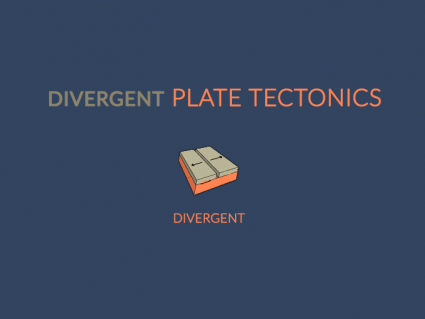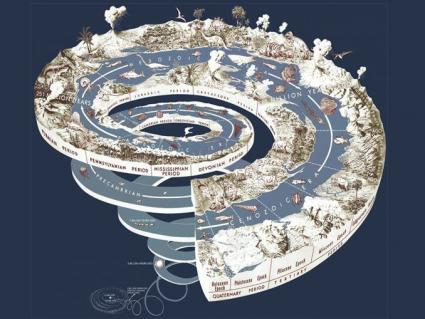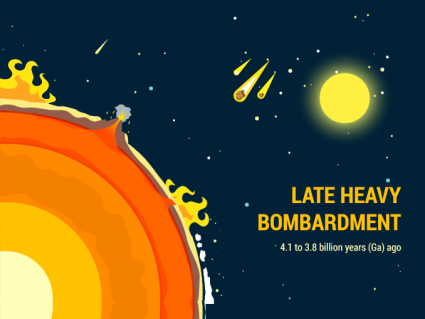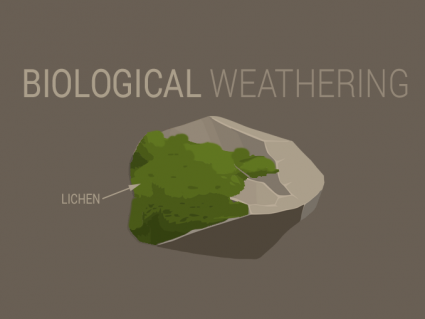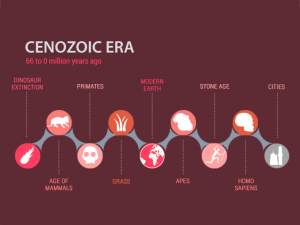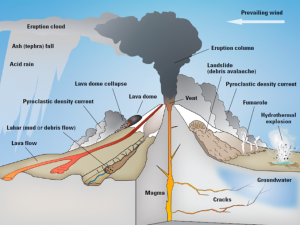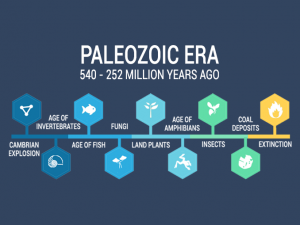4 Types of Fossils
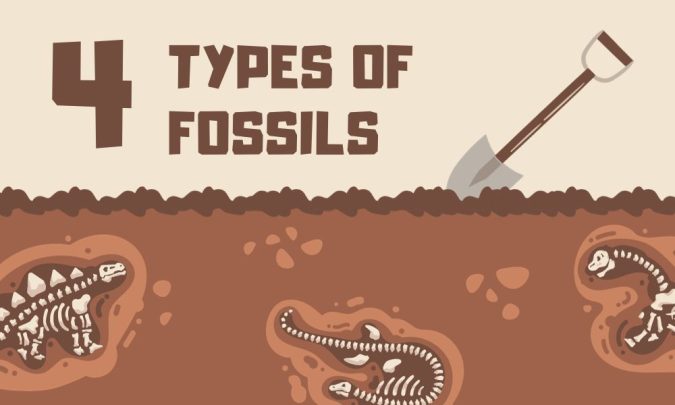
Fossils are like nature’s time capsules because they give us a glimpse into the distant past. They are the preserved remains or traces of plants, animals, and other organisms from the past. There are 4 types of fossils, each telling a different story about our Earth’s history.
1. Cast Fossils
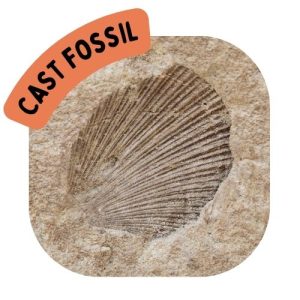
The first type of fossils is cast fossils. This one is like nature’s way of making a sculpture. Think of it like pressing your hand into wet sand. If you fill this hand-shaped hole with plaster, once it dries, you can lift it out. What you have now is a cast. It’s the same idea.
In nature, when an animal or plant gets pressed into mud or sand and then decays, it leaves a hollow shape just like the handprint. Over time, minerals seep into this shape to create cast and mold fossils. They harden and create a solid copy of the original creature or plant, just like the plaster hand.
2. Body Fossils
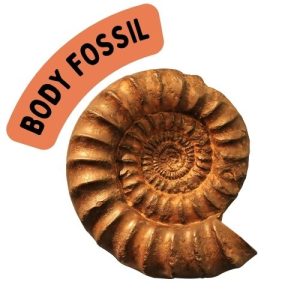
The second type of fossil is “true form” or body fossils. These are real-deal parts of plants or animals that have turned into fossils. Imagine finding a dinosaur bone or a leaf that’s millions of years old! These fossils are exactly that – actual bones, teeth, leaves, or other parts of living things from a long, long time ago.
Sometimes, these fossils are incredibly well-kept. It’s almost like they’ve been frozen in time. You can see details like the texture of the leaf or the shape of the teeth. But often, they’re not in perfect condition. They might be broken or worn down after being buried under layers of earth for so many years. Despite this, they still tell us stories about what life was like on Earth ages ago.
3. Trace Fossils
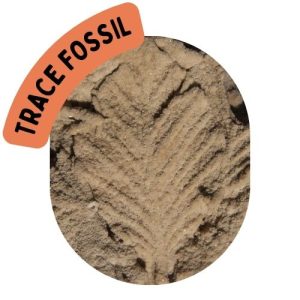
The third type of fossil is trace fossils. These are like footprints, nests, or handprints left behind by creatures. They are not parts of the organism’s body itself. But rather the marks or evidence of their activities.
Think of it like finding dinosaur footprints in rock – those footprints are trace fossils. They’re super helpful because they can show us how these creatures moved, how big they were, and even how they behaved.
By studying these fossils, scientists can piece together the story of how animals lived millions of years ago. Trace fossils are like detectives’ clues. We get a sneak peek into the activities and behaviors of animals that roamed the Earth long before humans.
4. Petrified Fossils
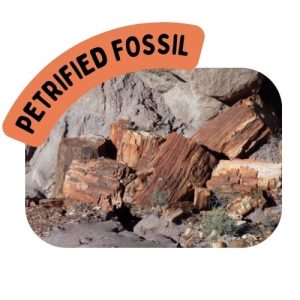
Lastly, we have petrified fossils. This type of fossil occurs when minerals replace the original organic material, like wood, turning it into stone. This process, called petrification, can preserve the details of the original organism. It helps us see exactly what these ancient forms of life looked like.
A classic example of a petrified fossil is petrified wood. Petrified wood is created when trees or plant material fall and get buried under sediment. Over millions of years, the organic parts of the wood are replaced by minerals. The result is a fossil that looks like wood found in the Petrified Forest National Park in Arizona.
Which type of rock are fossils found in?
We find fossils mostly in sedimentary rocks. These rocks are formed from particles like sand, mud, and small pieces of rocks that settle in layers at the bottom of oceans, lakes, and rivers.
Over time, these layers get squished together and turn into rock. Because these layers can bury plants and animals quickly, they are good at preserving fossils.
You don’t usually find fossils in other types of rocks, like igneous or metamorphic rocks. This is because the way they form will destroy any type of fossils.
Summary: Types of Fossils
Fossils provide a unique window into the past, helping us piece together the story of life on Earth.
Fossils come in different forms. Mold and cast fossils show us the shapes and imprints of ancient life, while true form fossils give us the actual remains like bones or leaves.
Trace fossils reveal the activities of creatures long gone. Finally, petrified fossils capture the very essence of organic material, turning it into stone.
Together, these different types of fossils can help us unfold our planet’s history, from the age of dinosaurs and beyond.


